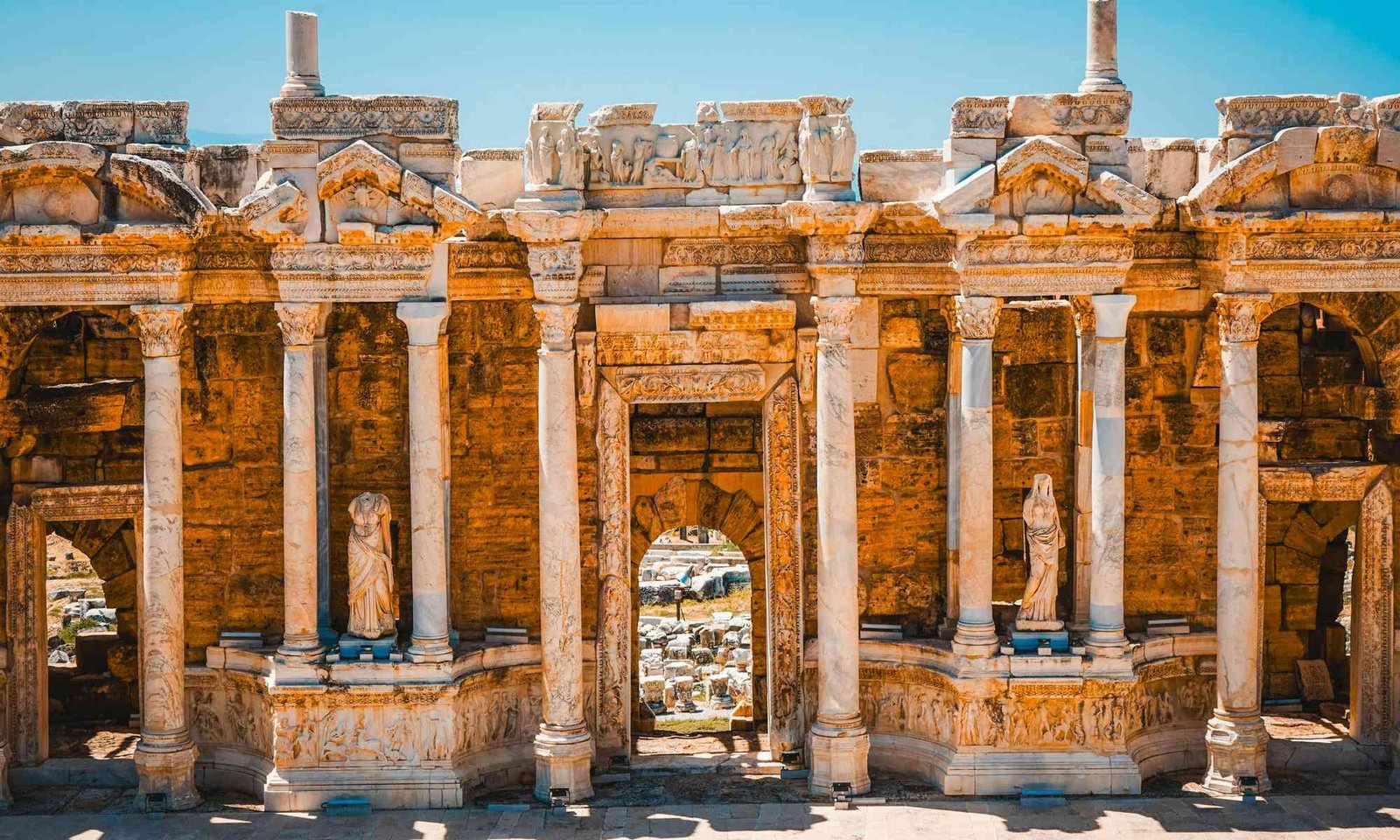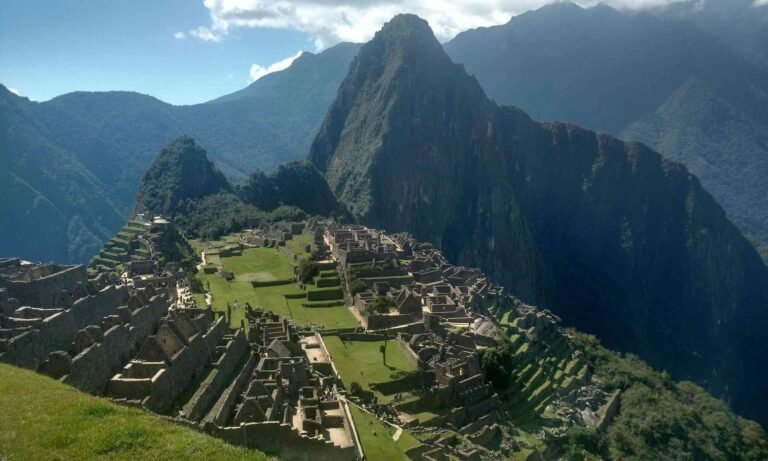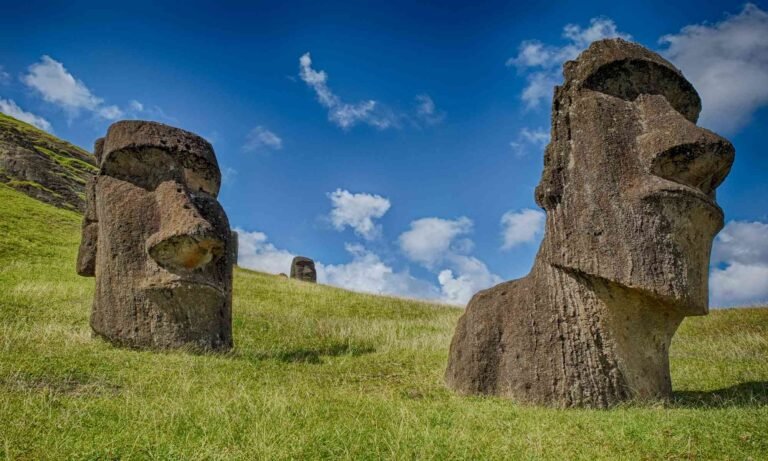Ancient ruins reveal past civilizations, reflecting their cultures, lifestyles, and architectural ingenuity. From Egypt’s pyramids to Machu Picchu, each site tells a unique story. Temples, fortresses, and cities showcase architectural brilliance, religious beliefs, and governance, captivating visitors. Exploring these ruins deepens our understanding of humanity’s evolution, uncovering details of daily life, trade, and governance that still resonate today.
Kailasa Temple: A Marvel of Rock-Cut Architecture
The Kailasa Temple, also known as the Kailasanatha Temple, is a remarkable specimen of rock-cut architecture located in Ellora, India. Dating back to the 8th century, this architectural wonder was carved during the rule of the Rashtrakuta dynasty. This temple stands as a testament to the sophisticated engineering skills and artistic craftsmanship of its time.
The sheer scale of the Kailasa Temple is awe-inspiring; it is among the largest monolithic structures, meticulously carved from a single basalt block. The innovative design blends Hindu, Buddhist, and Jain elements, showcasing the era’s religious tolerance.
The Kailasa Temple is a stunning rock-cut structure, carved from a single basalt block with extraordinary skill. Unlike brick-built temples, it was sculpted by removing 200,000 tons of rock, featuring intricate carvings of Hindu deities and mythological scenes dedicated to Lord Shiva. Recognized as a UNESCO World Heritage Site in 1986, it remains a symbol of India’s rich heritage and architectural brilliance.
The Pyramids of Giza: Wonders of the Ancient World
The Pyramids of Giza, located on the Giza Plateau near Cairo, are among the most remarkable achievements of ancient engineering and remain one of the most significant symbols of ancient Egypt. Constructed during the Fourth Dynasty of the Old Kingdom, these monumental structures include the Great Pyramid of Khufu, the Pyramid of Khafre, and the Pyramid of Menkaure.
Each pyramid served as a grand tomb for the pharaohs, reflecting their wealth, power, and divine status. This was not merely a final resting place; it was a gateway to the afterlife, where the pharaohs were believed to ascend to the heavens.
The pyramids have fascinated historians for centuries. Skilled workers used copper chisels and levers to move massive stone blocks with impressive precision, showcasing ancient Egyptian expertise in mathematics and astronomy. Beyond their architectural brilliance, the pyramids served as royal tombs, reinforcing beliefs in the afterlife through their celestial alignment. The Pyramids of Giza remain globally influential, inspiring modern designs and preserving Egypt’s rich legacy.
Stonehenge and the Great Wall: Symbols of Human Ingenuity
Stonehenge and The Great Wall of China symbolize human ingenuity and endurance in different historical contexts. Stonehenge evokes prehistoric mystery and spirituality, while The Great Wall reflects strategic and protective needs. Both landmarks inspire awe and respect for our ancestors’ creativity.
- Stonehenge, dating back to 3000–2000 BC, is a mysterious stone circle on England’s Salisbury Plain. Its purpose remains uncertain, but theories suggest it was an astronomical observatory, a religious site, or a ritual gathering place. Its precise alignment with celestial events highlights the Neolithic peoples’ advanced understanding of astronomy.
- The Great Wall of China, built from the 7th century BC through the Ming Dynasty, stretches over 13,000 miles as a defense against invasions. Beyond its military role, it symbolizes national unity and showcases ancient China’s engineering ingenuity, built by thousands of laborers across rugged terrain.
Angkor Wat: A Timeless Wonder of Khmer Architecture
Angkor Wat, Cambodia’s crown jewel, is one of the most awe-inspiring architectural achievements in history. Built in the early 12th century by King Suryavarman II, it was originally dedicated to Vishnu before becoming a Buddhist site. Enclosed by a massive moat and intricate walls, it features exquisite carvings depicting mythology and royal processions.
Covering over 400 acres, Angkor Wat is the world’s largest religious monument and a masterpiece of Khmer architecture. Its symmetrical design, towering sanctuary, and vast corridors highlight the engineering skill of its creators. Today, it remains a revered site and a symbol of Cambodia’s heritage, drawing millions of visitors.
Angkor Wat’s design reflects Mount Meru, with five spires rising above a surrounding moat. Its intricate bas-reliefs depict scenes from Hindu epics, showcasing Khmer artistry. Once abandoned, it was restored with UNESCO’s assistance and remains Cambodia’s national symbol. Whether viewed at sunrise or explored through its vast corridors, Angkor Wat continues to captivate visitors with its grandeur and historical significance.
Borobudur: A Majestic Legacy of Buddhist Architecture
Borobudur, Indonesia’s crown jewel, is the world’s largest Buddhist temple and a masterpiece of Javanese architecture. Built in the 8th and 9th centuries under the Sailendra Dynasty, it reflects the region’s deep spiritual traditions. A UNESCO World Heritage Site, it remains one of Southeast Asia’s most visited landmarks.
Its design mirrors Buddhist cosmology, with three tiers representing the path to enlightenment. The lower levels depict earthly life, while the upper terraces ascend toward spiritual awakening. With over 2,500 bas-reliefs and 72 stupas, Borobudur showcases the artistic brilliance of its creators.
Abandoned for centuries due to volcanic eruptions and shifting political landscapes, Borobudur was rediscovered in the 19th century and later restored with UNESCO’s assistance. Today, it remains a vital pilgrimage site for Buddhists and a testament to Indonesia’s rich cultural heritage. Whether viewed at sunrise, when its silhouette glows against the misty horizon, or explored through its labyrinthine corridors, Borobudur continues to captivate visitors with its grandeur and historical significance
A completing List of famous Ancient Ruins
The world is full of breathtaking ancient ruins that offer a glimpse into past civilizations. Here are some of the most famous ones:
- Machu Picchu, Peru – The iconic Incan citadel nestled high in the Andes.
- Chichén Itzá, Mexico – A stunning Mayan city featuring the famous pyramid, El Castillo.
- The Colosseum, Italy – Rome’s grand amphitheater, once used for gladiator battles.
- The Acropolis, Greece – Home to the Parthenon and other ancient Greek structures.
- Petra, Jordan – A city carved into rose-red cliffs, famously known as the “Lost City.”
- Easter Island, Chile – Famous for its massive stone Moai statues.
- Pompeii, Italy – A Roman city frozen in time after the eruption of Mount Vesuvius.
- Sigiriya, Sri Lanka – An ancient fortress built atop a massive rock formation.
What’s More
The posts in My Blog feature reflective, story-driven pieces rooted in personal and societal insights.
The topics in My Interests explore abstract, philosophical ideas and their cultural and societal impact.
👁️ 9,052 Views






















